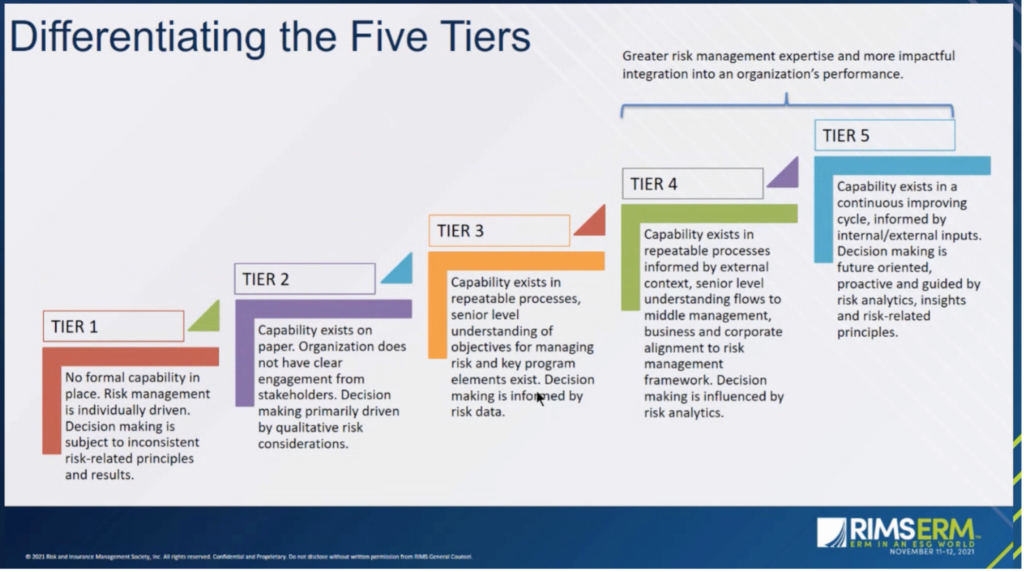On Friday, RIMS President Ellen Dunkin presented the Internal Revenue Service (IRS) with the 2021 Global Enterprise Risk Management Award of Distinction at the Society’s ERM Conference in New York City. The honor recognized the IRS’s outstanding achievements that allow it to anticipate emerging risks and establish the appropriate culture, processes and structures to strengthen strategic decision-making.
Navigating the impacts of an extended government shutdown, sweeping tax reforms, operational disruption due to the COVID-19 pandemic and providing essential financial relief to thousands of businesses and individuals across the United States, the IRS ERM program helped the agency to remain resilient and effectively manage a multitude of dynamic challenges.
“Through the ERM program’s focus on embedding risk management capabilities into the existing structures and operations, the agency has become more risk aware,” said Jeffrey Tribiano, the IRS’s deputy commissioner for operations support. “There is also greater collaboration across the enterprise to address significant risks that require efforts from multiple business units. By effectively highlighting the enterprise-wide effects of risks, and by capturing risks on the enterprise risk profile, ERM has helped garner agency-wide attention and support for measures to help address the risks. Since IRS established its ERM program in 2014, it has played a critical role in helping the agency to better understand and respond to risk, thus making the organization more resilient and better able to serve the American people.”
This year, RIMS honored three other organizations for their exceptional accomplishments developing, implementing and maturing ERM within their organizations. Honorees included:
- 2021 RIMS Global ERM Award of Distinction Honorable Mention: Dallas Fort Worth International Airport
- 2021 RIMS ERM Award of Distinction–U.S. Honoree: Eversource Energy
- 2021 RIMS ERM Award of Distinction–International Honoree: EuroChem
“Enterprise risk management continues to deliver exceptional value to organizations, allowing them to successfully address emerging risks while also identifying and leveraging opportunities that might not have otherwise been apparent,” Dunkin said. “Risk professionals get better—and deliver better results—by learning from each other. We are so grateful to the IRS and all of honorees for sharing their ERM journeys with the RIMS community and doing their part to advance this rewarding profession.”
Judging criteria for the Global ERM Award of Distinction include measurable, tangible and sustainable results; unique program strengths; ERM innovation that links risk with strategy or performance; and the program’s ability to build sustaining risk management capabilities. The panel comprises members of RIMS Strategic and Enterprise Risk Management Council.
RIMS ERM Conference 2021 was held November 11-12 in New York City and virtually. The program themed “ERM in an ESG World” focused on the growing risks stemming from environmental, social and governance challenges.

